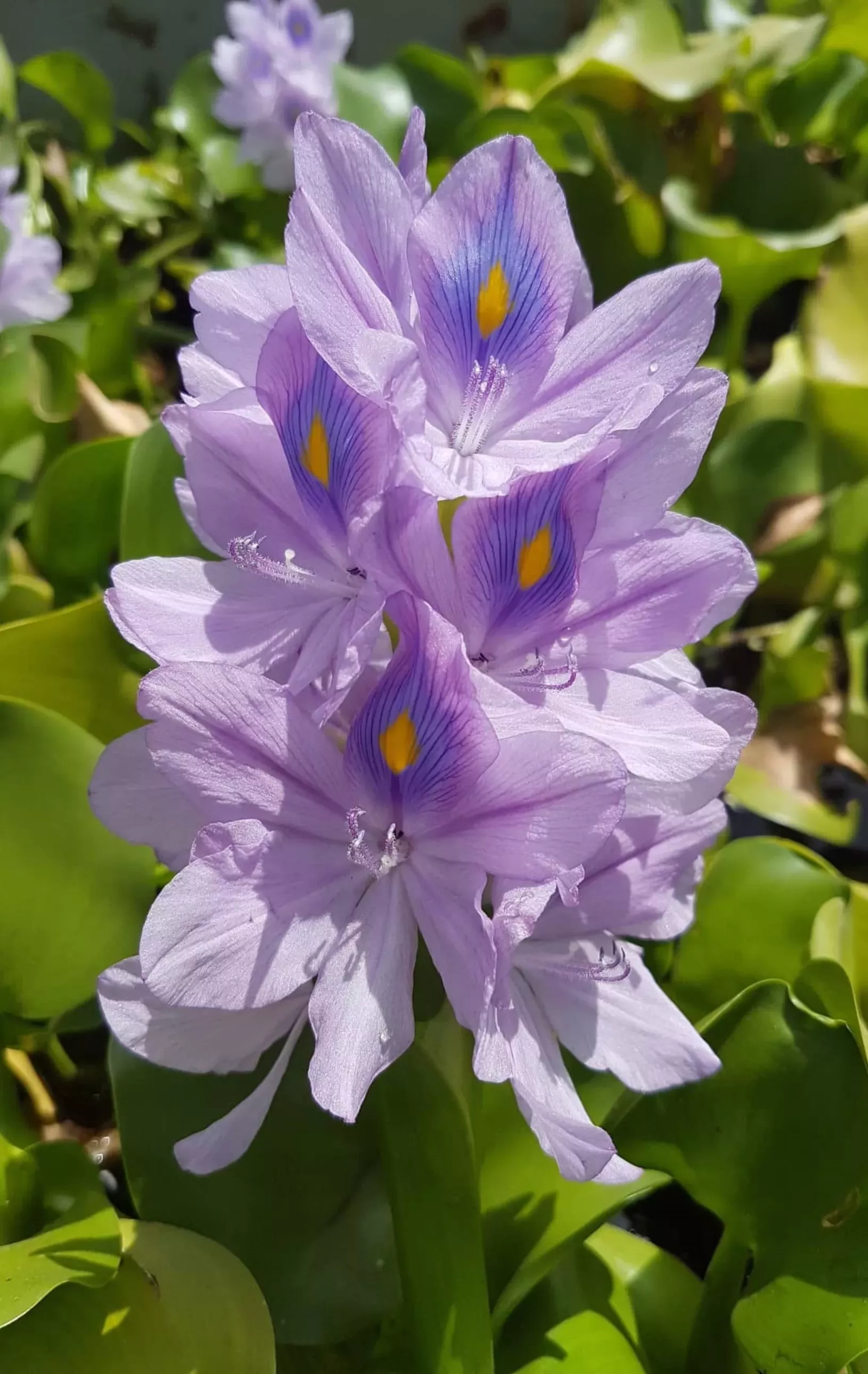The Water Hyacinth: A Double-Edged Sword
Introduction
The water hyacinth (Eichhornia crassipes) is a free-floating aquatic plant native to the Amazon basin. It is characterized by its rapid growth and proliferation, often forming dense mats that can cover entire bodies of water. While it has aesthetic appeal with its lavender flowers and lush green leaves, the water hyacinth has earned a reputation as one of the world’s most invasive aquatic plants. This article delves into the various aspects of the water hyacinth, exploring its biology, ecological impact, and potential uses.
Biology and Growth

# Physical Characteristics
The water hyacinth is a perennial herb with thick, glossy leaves that are rounded or oval in shape. The leaves are arranged in rosettes and have swollen petioles that contain air-filled tissues, enabling the plant to float. Its roots are feathery and hang freely in the water, absorbing nutrients and providing stability. The plant produces beautiful lavender or pink flowers with a yellow spot on one petal, arranged on a spike that rises above the water surface.
# Reproduction and Proliferation
The water hyacinth exhibits remarkable growth rates, capable of doubling its population in as little as two weeks under favorable conditions. It reproduces both sexually through seeds and asexually through vegetative propagation. The plant produces numerous seeds that can remain viable for many years, contributing to its persistent presence in water bodies. Additionally, it spreads rapidly through stolons, horizontal stems that produce daughter plants, forming extensive colonies.

Ecological Impact
# Invasive Nature
The water hyacinth’s rapid growth and prolific reproduction have made it a notorious invasive species in many parts of the world. Introduced to new environments through human activities, it quickly establishes itself, outcompeting native aquatic plants and disrupting the ecological balance. Its ability to form dense mats blocks sunlight penetration, hindering photosynthesis and causing the death of submerged plants. The decomposition of dead plant matter depletes oxygen levels in the water, harming fish and other aquatic organisms.
# Environmental Consequences
The water hyacinth’s presence can have severe consequences for aquatic ecosystems. The dense mats impede water flow, reducing water circulation and leading to stagnant conditions. This can result in the accumulation of pollutants and further deterioration of water quality. The plant’s rapid growth also leads to excessive water loss through evapotranspiration, potentially affecting water availability for other uses. Moreover, the water hyacinth can hinder navigation, impede fishing activities, and disrupt recreational use of water bodies.
Potential Uses
# Phytoremediation
Despite its negative impacts, the water hyacinth has shown promise in phytoremediation, the use of plants to remove pollutants from the environment. Its ability to absorb heavy metals and other contaminants from water makes it a potential tool for cleaning polluted water bodies. However, careful management is required to prevent the plant from spreading further and causing additional problems.
# Bioenergy Production
The water hyacinth’s high biomass and rapid growth make it a potential source for bioenergy production. It can be used to produce biogas, a renewable fuel that can be used for electricity generation or heating. However, the economic viability and environmental sustainability of large-scale bioenergy production from water hyacinth require further research and development.
# Other Applications
The water hyacinth has also been explored for various other applications, including its use as a soil amendment, animal feed, and raw material for handicrafts. However, these applications are often limited by the plant’s high water content and the need for processing to remove excess moisture.
Control and Management
# Physical Removal
Various methods have been employed to control water hyacinth infestations. Physical removal, such as manual harvesting or using mechanical harvesters, can be effective for small infestations. However, it can be labor-intensive and costly, and may not be feasible for large-scale infestations.
# Biological Control
Biological control involves the use of natural enemies, such as insects or pathogens, to control the growth of the water hyacinth. Several biological control agents have been introduced in different regions, with varying degrees of success. However, careful research is needed to ensure that the introduced agents do not harm native species or create new ecological problems.
# Chemical Control
Chemical control involves the use of herbicides to kill the water hyacinth. However, this method can have negative impacts on non-target organisms and the environment, and is generally not recommended for widespread use.
Conclusion
The water hyacinth is a complex plant with both beneficial and detrimental aspects. While its rapid growth and invasive nature have caused significant ecological problems, its potential uses in phytoremediation, bioenergy production, and other applications cannot be ignored. Effective management strategies are crucial to control its spread and harness its potential benefits. Further research and development are needed to optimize its use while minimizing its negative impacts.



